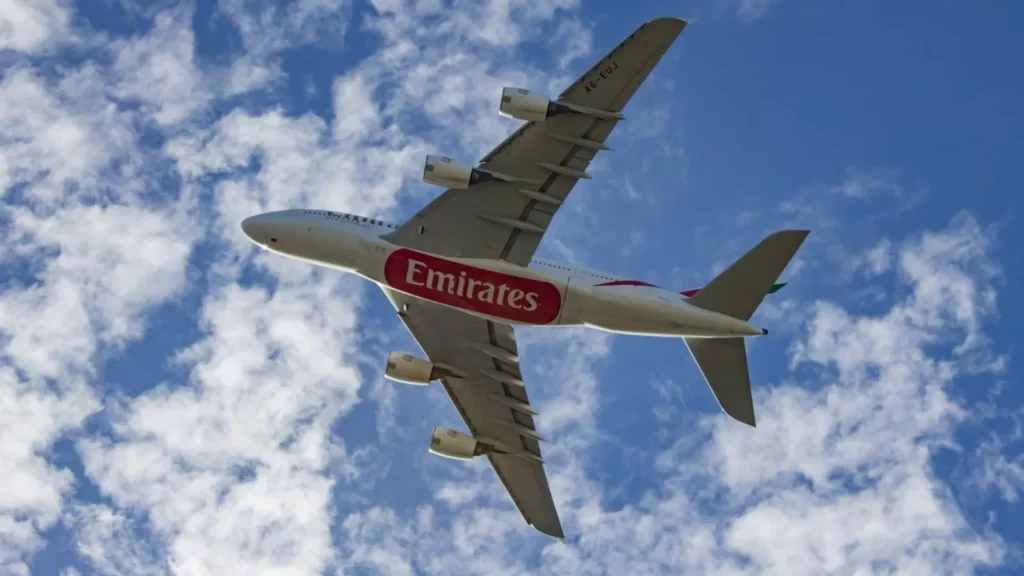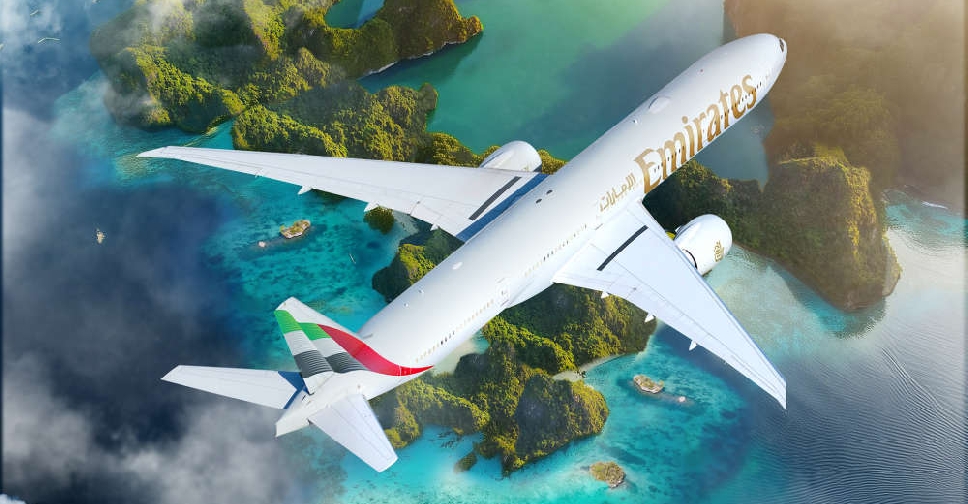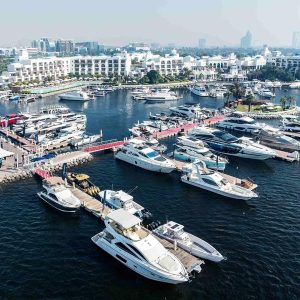Emirates expands routes to Shenzhen and Siem Reap as part of its continued commitment to connect Dubai with the world’s fastest-growing destinations. The move reflects the airline’s strategic expansion in Asia, strengthening its already vast global network and meeting rising passenger demand for travel between the Middle East and Southeast Asia. By introducing new routes to China’s dynamic tech hub, Shenzhen, and Cambodia’s cultural jewel, Siem Reap, Emirates not only adds more travel options but also reinforces its status as a leading connector of people, places, and economies.
The expansion underlines the airline’s confidence in Asia’s aviation recovery and the growing appetite for leisure and business travel. Both Shenzhen and Siem Reap bring unique opportunities to Emirates’ portfolio — Shenzhen as a major business and innovation center, and Siem Reap as one of the world’s most iconic cultural destinations, home to the magnificent Angkor Wat temples.
Expanding Horizons: A Milestone for Emirates
The addition of Shenzhen and Siem Reap to Emirates’ route map marks a significant milestone in its growth strategy. Over the past few years, Emirates has gradually rebuilt and expanded its global network after pandemic disruptions, restoring passenger confidence and increasing frequencies to popular destinations. The inclusion of these two Asian cities showcases Emirates’ forward-looking approach — one that blends commercial opportunity with cultural connection.

Shenzhen, located in southern China, is often called the “Silicon Valley of Asia,” with thriving industries in technology, finance, and innovation. For Emirates, this means connecting Dubai’s business community directly to one of the most economically dynamic cities in the world. Meanwhile, Siem Reap’s inclusion is a nod to the growing demand for experiential travel. The city attracts millions of tourists annually, drawn by its rich heritage, lush landscapes, and deep sense of history. By offering direct access, Emirates opens new doors for travelers seeking authentic cultural experiences across Asia.
Strengthening Connectivity Between Dubai and Asia
Emirates’ new routes further reinforce Dubai’s position as a global aviation hub. The city already serves as a major transit point for millions of passengers traveling between Europe, the Middle East, Africa, and Asia. With the addition of Shenzhen and Siem Reap, travelers can now enjoy smoother, one-stop access between these emerging destinations and major global markets.

For the Shenzhen route, Emirates will operate modern Boeing 777 aircraft equipped with advanced in-flight entertainment, business-class comforts, and superior cargo capacity. This connection is expected to serve not only business travelers but also facilitate trade and logistics between China and the UAE. In contrast, the Siem Reap service will cater to leisure travelers, particularly those seeking new vacation experiences. The route is strategically timed to connect with Emirates’ European and Gulf arrivals, ensuring seamless onward journeys for tourists heading to Cambodia.
A Boost for Tourism and Economic Growth
The introduction of these routes comes at a time when both China and Cambodia are investing heavily in tourism and infrastructure development. For Siem Reap, Emirates’ direct service is a potential game-changer, expected to revive international arrivals and support local hospitality businesses. Many luxury resorts, tour operators, and cultural institutions in Cambodia are preparing to welcome an influx of travelers from Europe and the Middle East.
Similarly, Shenzhen’s inclusion in Emirates’ network opens new channels for business partnerships, trade expansion, and investment. With China emerging as one of the UAE’s top trading partners, the connection provides businesses on both sides easier access to key markets. Entrepreneurs, investors, and professionals can now fly directly between Dubai and Shenzhen, saving time while unlocking greater opportunities for collaboration in technology, finance, and logistics.
A Strategic Move in a Competitive Aviation Market
Emirates’ decision to expand into Shenzhen and Siem Reap also underscores its strategic agility in a competitive global aviation market. As other carriers focus on high-volume routes, Emirates continues to diversify its destinations, targeting both established and emerging travel corridors. The airline’s extensive network now covers more than 140 cities across six continents, with Asia playing an increasingly vital role in its growth plans.
The move also complements Emirates’ existing routes in China — including Beijing, Shanghai, and Guangzhou — creating a more robust presence in one of the world’s most populous nations. With Shenzhen’s addition, Emirates strengthens its coverage across China’s economic powerhouses. In Cambodia, it becomes one of the few full-service international airlines offering long-haul connectivity, giving travelers new choices and improving accessibility to a country rich in culture and natural beauty.
Enhancing the Passenger Experience
As part of its expansion, Emirates continues to focus on delivering world-class service both on the ground and in the air. Passengers on the Shenzhen and Siem Reap routes can expect the signature Emirates experience — from regionally inspired cuisine and generous baggage allowances to award-winning in-flight entertainment via the ICE system.
Business-class travelers enjoy fully reclining seats, premium dining, and exclusive access to Emirates’ airport lounges, while economy-class passengers benefit from comfortable seating and a wide range of entertainment options. The airline’s multilingual cabin crew, known for their hospitality, adds a personal touch that has helped Emirates consistently rank among the world’s best carriers.
Beyond the in-flight experience, Emirates is also enhancing digital services to make the journey more seamless. Features like online check-in, real-time baggage tracking, and Wi-Fi connectivity ensure that passengers remain connected and informed throughout their travel.
Strengthening Global Partnerships
The launch of these new routes also reflects Emirates’ broader efforts to strengthen partnerships across the aviation ecosystem. Collaborations with tourism boards, local governments, and airport authorities play a crucial role in route development and promotion. In Cambodia, Emirates’ arrival aligns with national efforts to attract high-spending tourists and diversify visitor markets. The airline’s vast European and Middle Eastern network is expected to channel travelers who might not have previously considered Siem Reap a direct vacation option.
In China, partnerships with local travel agencies, corporate clients, and logistics providers will help maximize the potential of the Shenzhen route. By working closely with regional stakeholders, Emirates ensures that the benefits of connectivity extend beyond passengers to the wider economy — including trade, cargo, and tourism.
Sustainability and Future-Focused Growth
As the aviation industry evolves, Emirates remains committed to sustainability and innovation. The new Shenzhen and Siem Reap routes are operated using fuel-efficient aircraft and optimized flight paths to reduce environmental impact. Emirates continues to invest in next-generation technologies and sustainable aviation fuel (SAF) initiatives, aiming to align its operations with global climate goals.
Moreover, the airline is exploring ways to promote eco-conscious tourism through its network expansion. Destinations like Siem Reap, which rely on cultural preservation and responsible travel, benefit from Emirates’ focus on promoting sustainable travel practices. Through partnerships and awareness campaigns, Emirates seeks to ensure that tourism growth aligns with long-term conservation and community goals.
Dubai’s Role as a Global Connector
Dubai’s strategic location continues to position it as a global bridge between East and West. The Emirates expansion into Shenzhen and Siem Reap reinforces this role by connecting diverse markets through one of the world’s most efficient aviation hubs. Dubai’s world-class infrastructure — including Dubai International Airport and the upcoming Al Maktoum International Airport expansion — ensures the city remains at the forefront of global travel.
This development also supports the UAE’s broader vision of economic diversification and global engagement. As the nation positions itself as a hub for trade, tourism, and innovation, Emirates’ route expansion contributes to national goals by enhancing accessibility and promoting cross-border collaboration.
Expanding Opportunities for Travelers and Businesses
For travelers, these new routes offer more than convenience — they open doors to discovery. From exploring Cambodia’s ancient temples to experiencing China’s modern marvels, passengers now have easier access to destinations that capture both history and innovation. For businesses, the routes foster stronger connections between Asia and the Middle East, supporting trade, investment, and knowledge exchange.
The growing network also benefits Dubai itself. Each new destination enhances the city’s status as a global crossroads, attracting more visitors and reinforcing its reputation as one of the world’s most connected cities. Whether for leisure or business, travelers passing through Dubai experience its world-renowned hospitality and forward-thinking urban energy.

The Future of Emirates’ Expansion Strategy
Emirates’ recent growth reflects a long-term vision of sustainable expansion and market leadership. The airline continues to assess new routes across Asia, Africa, and Latin America to meet evolving passenger trends. Its flexible fleet, strong partnerships, and reputation for excellence enable it to adapt swiftly to global travel demands.
The addition of Shenzhen and Siem Reap demonstrates Emirates’ ability to balance commercial insight with cultural sensitivity — serving both high-growth business corridors and inspiring leisure destinations. As global travel continues to rebound, Emirates is well-positioned to capture new opportunities while maintaining the premium quality that defines its brand.
Conclusion: Connecting Cultures, Commerce, and Communities
The launch of Emirates’ new routes to Shenzhen and Siem Reap highlights the airline’s enduring mission — connecting cultures, commerce, and communities across the globe. It’s not just about expanding a network; it’s about building bridges between people and possibilities. By linking Dubai to China’s innovation capital and Cambodia’s cultural heart, Emirates continues to strengthen its position as a global aviation leader.
These routes symbolize the future of air travel — where convenience meets experience, and where every flight becomes a journey of connection and discovery. As Emirates continues to expand its horizons, passengers can look forward to more destinations, better experiences, and a world that feels closer than ever before.
Do follow UAE Stories on Instagram
Read Next – Coffeemania Opens Its First UAE Restaurant at Dubai Hills Mall














